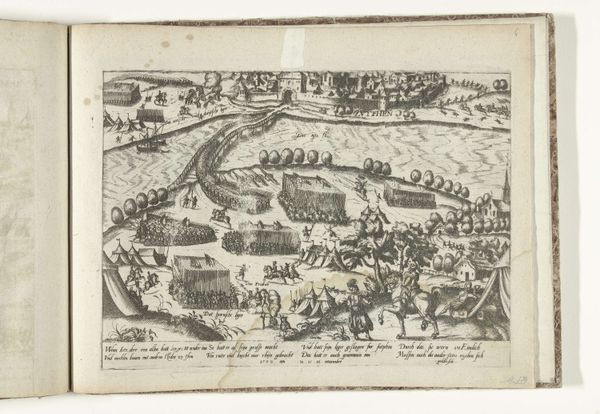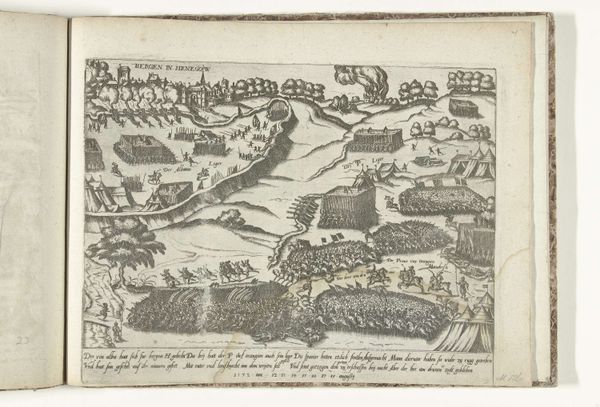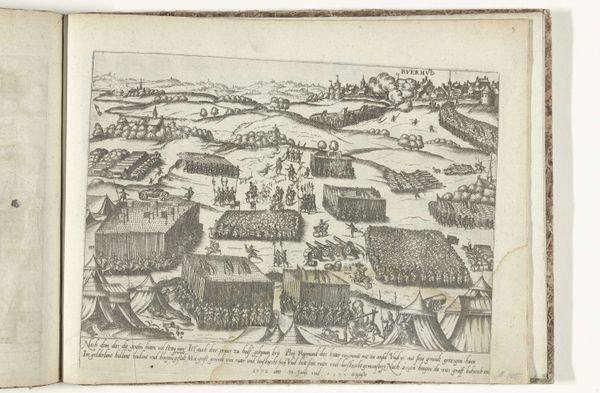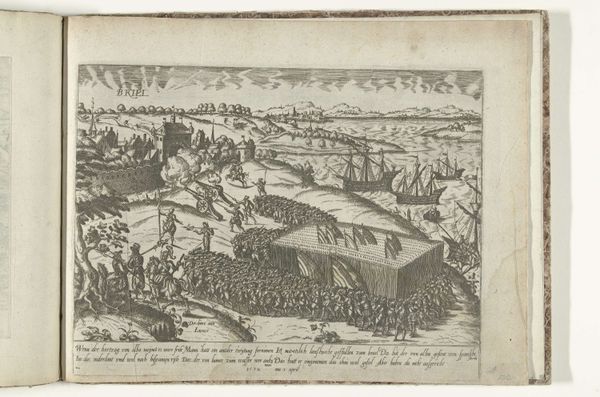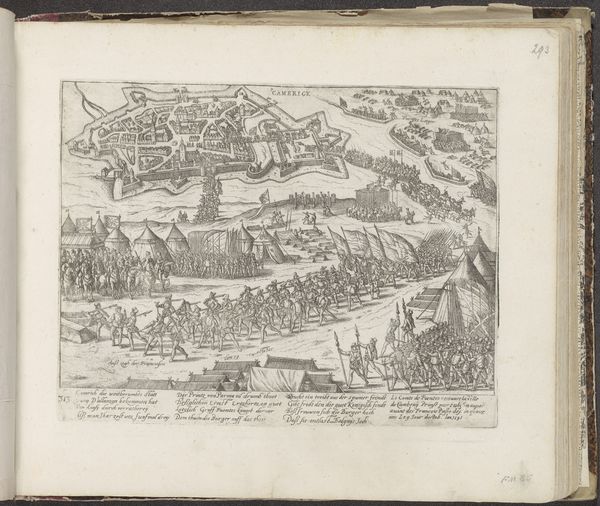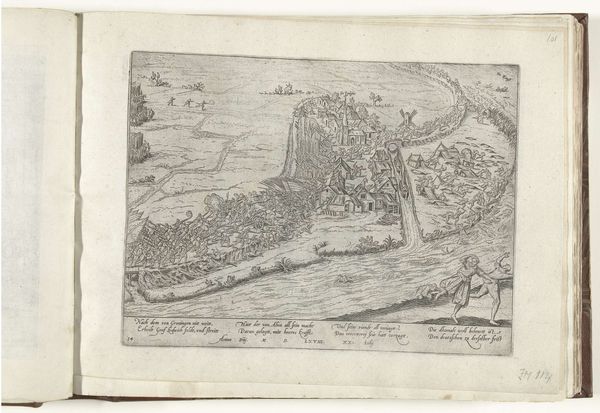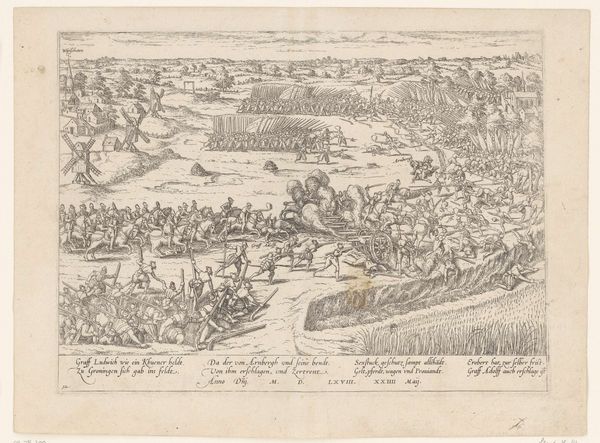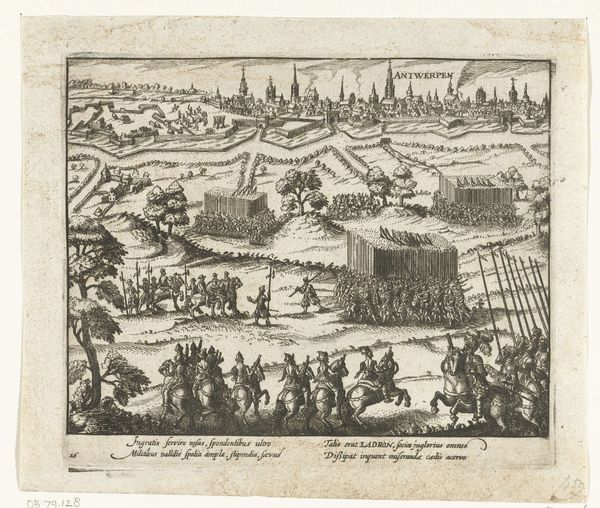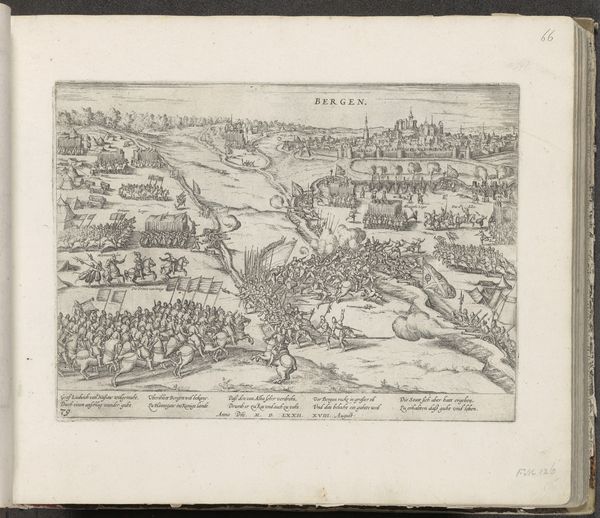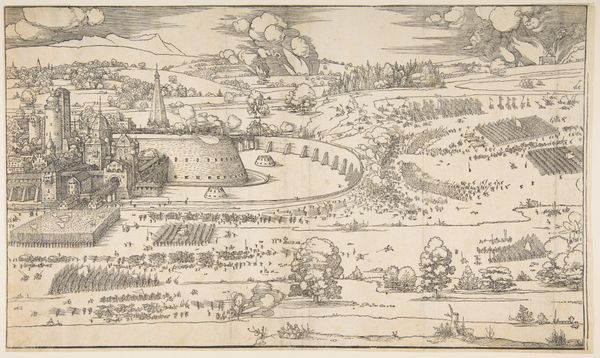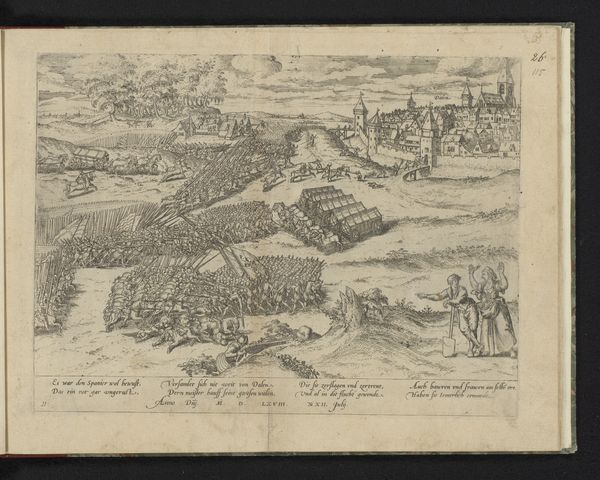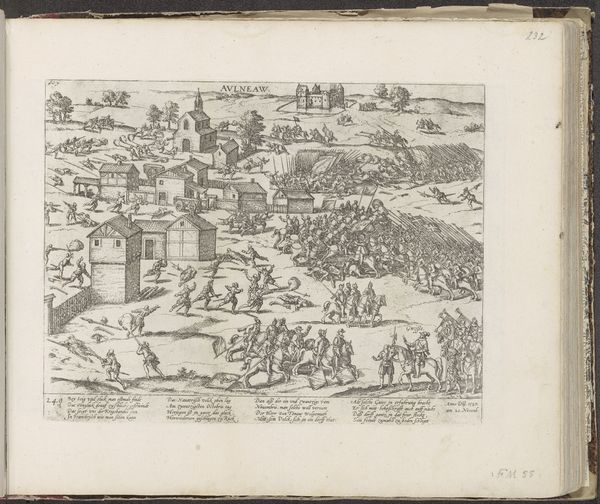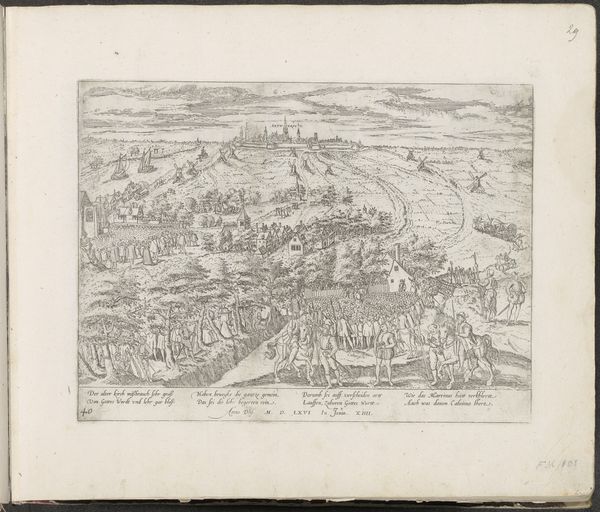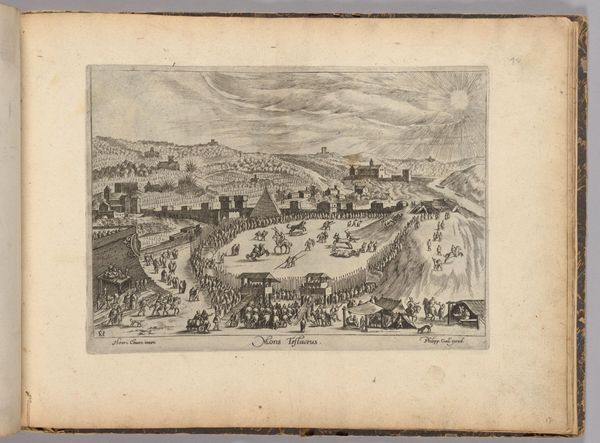
print, engraving
# print
#
landscape
#
11_renaissance
#
history-painting
#
engraving
Dimensions: height 240 mm, width 310 mm
Copyright: Rijks Museum: Open Domain
Editor: This is an engraving, made sometime between 1572 and 1574, depicting "Lodewijk van Nassau verlaat Bergen, 1572". It's by an anonymous artist and it shows a landscape teeming with tiny figures, a town in the distance, and what looks like armies marching. I’m curious about the visual choices made to convey this particular historical event. What strikes you most about this image, considering the period it was made? Curator: The interesting thing about prints like these, produced during times of conflict, is to consider their purpose and the audience. They often served as a form of propaganda, shaping public opinion and solidifying narratives around historical events. Notice how orderly and prominent the departing forces appear. Editor: So, beyond just documenting an event, it’s trying to shape the viewer's understanding of it? Curator: Precisely. Ask yourself, who would commission such a work? And what message are they trying to communicate? Is it a celebration, a lament, or a strategic piece of image-making to embolden people towards a certain cause? The detailed depiction of the landscape, despite the small scale of the figures, also emphasizes the strategic importance of this location. It’s a way of saying: “This place matters." Editor: That’s fascinating, thinking about art as active participant in history, shaping how events were understood, and bolstering national or political objectives. I hadn't considered it so directly before. Curator: Exactly! It's not merely a depiction, it’s a historical actor. Considering that helps us understand the public role of art in the 16th century. Editor: This makes me see this little print in a completely different light. It’s not just a record; it’s an argument!
Comments
No comments
Be the first to comment and join the conversation on the ultimate creative platform.
